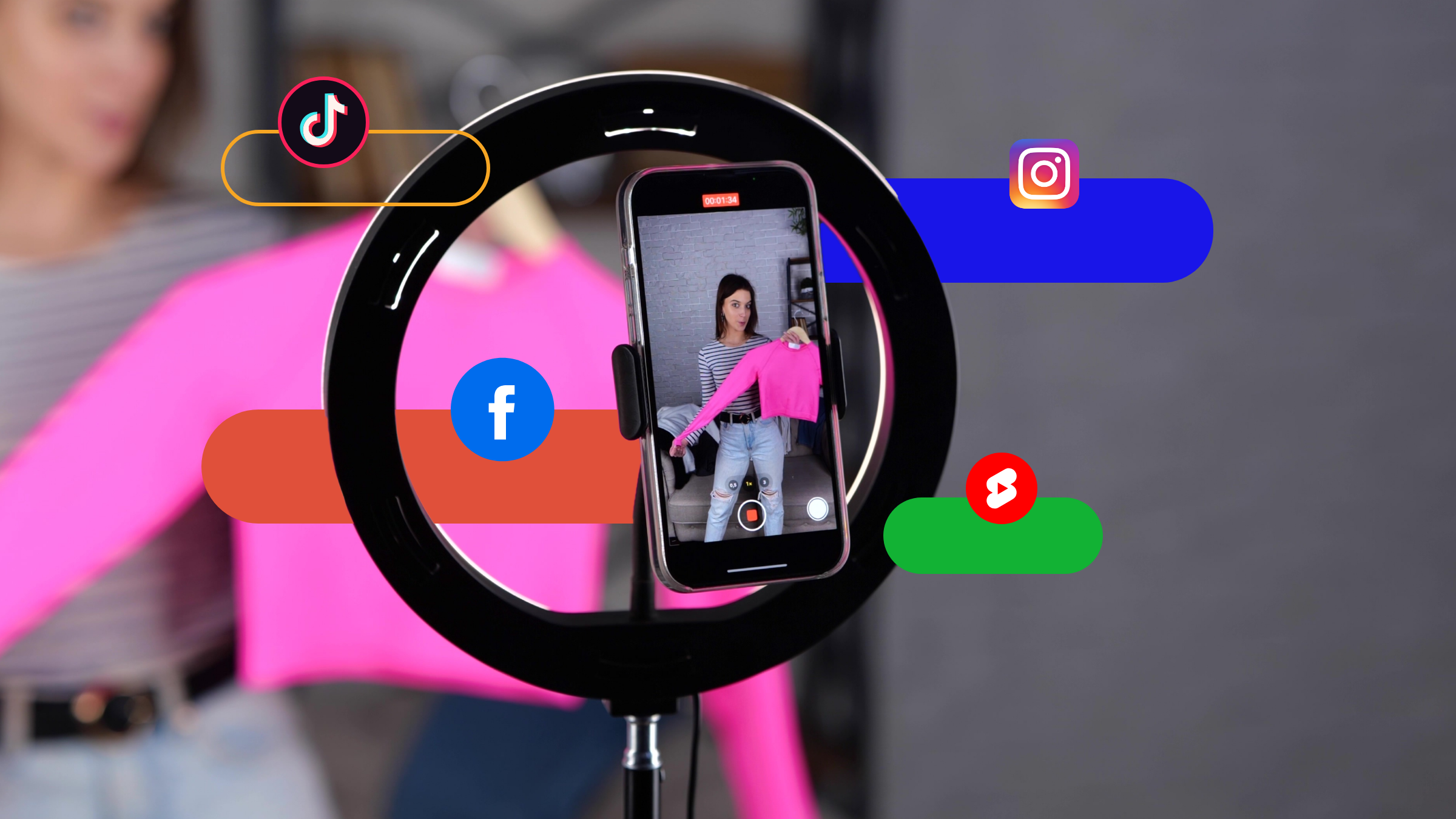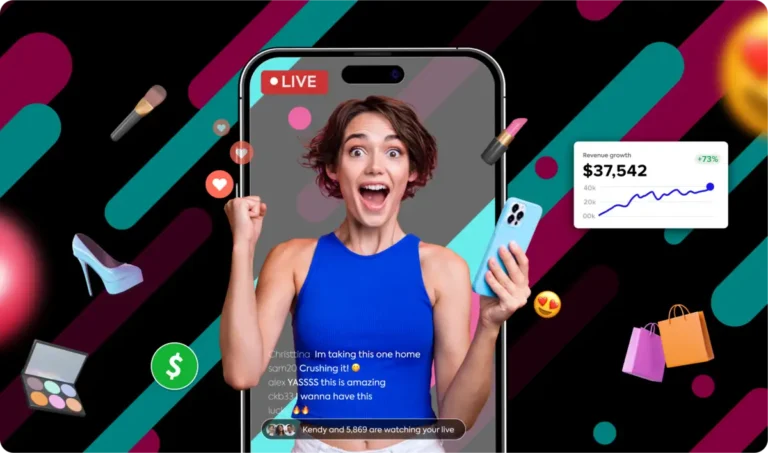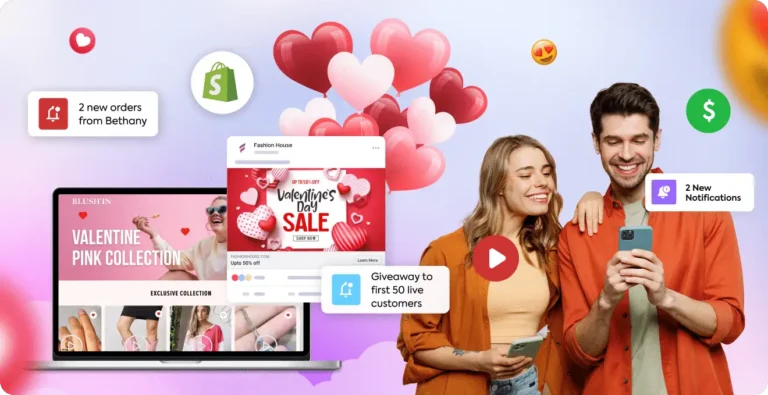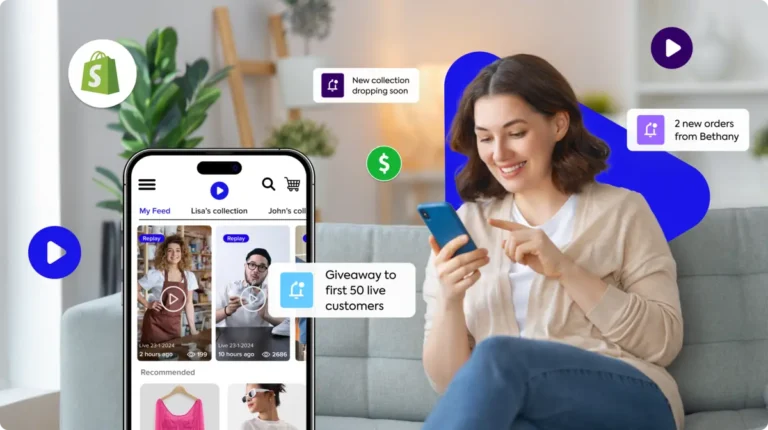E-commerce is a world that never sleeps. To thrive means businesses must innovate to increase their sales while doing the same for customer engagement. Social commerce is a sales strategy that can do both. It uses social media platforms to create deeply interactive and direct shopping experiences—your users go from discovery to decision to purchase while staying within the app.
Social commerce—or social selling—has become crucial for businesses to keep growing as the digital age progresses. And it isn’t a must just for small businesses—even high-profile startups must use social commerce if they wish to grow.
With that, we’ll show you how to use social commerce to your advantage and boost your sales permanently.

Social Commerce Basics
While related, social commerce differs from social media marketing. Social media marketing is just one part of the marketing funnel to drive potential customers to your website or online store.
Social commerce is all about making a sale without the user having to leave the social media app they are already using. Examples are having a “Buy Now” button on an Instagram post or using shoppable pins on Pinterest.
Know Your Audience
Like social media marketing, knowing your target audience is where you start. The truth is only some social media platforms may be suitable for your business. However,—if you have the resources and bandwidth—the more social channels you’re on, the more people will get to know your brand and products.
An example of this would be Instagram being great for brands in the lifestyle or fashion industries, but if you’re supplying B2B services, you’d be wise to go with LinkedIn instead. Knowing your target audience means knowing where they spend time online, and that will tell you where you should be setting up your social commerce base.
User-Generated Content (UGC)
Social commerce comes with a considerable advantage: the potential for your products to go viral. Your customers can share their purchases or wishlist items with their networks easily, which can attract a lot of attention. The best way to capitalize on this potential will be to take advantage of user-generated content (UGC).
And we’re not talking just about customer reviews and testimonials. Also, it’s crucial to continuously engage your audience and budget more effectively. According to research, the average business will pour nearly 15% of its marketing budget into social media. Why would you spend unnecessarily on countless PPC ads and guest posts from experts when one or two campaigns can provide you with months’ worth of content for that specific channel?
Influencers and Partnerships
Influencers wield enormous power in the social media world—the ability to shape consumer behavior in many ways. So, weaving influencers into your social commerce strategy makes a lot of sense. Influencers can provide an authentic voice that captures your target audience. Due to that, you’ll want to remember that when selecting an influencer, it’s not just about their follower count. Their material must align with your target market and your brand and products.
Partnerships with complementary brands can also be a win-win situation. Using them, you can showcase your products to a broader audience, but one that is still targeted for your products. An example would be if you sell skincare products and choose to partner with a makeup brand—perhaps for a bundled offering. These partnerships can be particularly effective during the holiday season or special events.

Analytics and Tools
Like digital marketing, social commerce depends on good analytics to be effective. You’ll want to be able to track Key Performance Indicators (KPIs) like click-through rates, conversion rates, and ROI. These can provide invaluable insights and help you understand what’s working and needs tweaking in your strategy.
In addition to KPIs that track users’ activity while interacting with your material on social media, don’t forget to invest in tools that track their journey to getting there. Using SEO tools like Ahrefs or SEMrush can help ensure users who use search engines can find your product.
In addition to the platforms we mentioned above, you should also focus on tools that solve problems you face every day. For instance, if you’re handling a lot of documentation, a PDF editor can let you perform edits natively on any platform, collaborate with team members, and easily export the files as copies straight to your social media pages. Likewise, a specialized image editor can let you churn out dozens of improved product images.
Whether it’s 360-degree videos, images, or PDFs, you must find the right solutions for each phase of your business and use them efficiently.
FOMO and Limited-Time Offers
One of the best psychological triggers that can be used effectively in social commerce is the Fear of Missing Out (FOMO). The way to take advantage of FOMO is by using limited-time offers, flash sales, and exclusive drops. These all create urgency in the minds of your customers and persuade them to take action. A great way to do this is by using countdown timers. You can also take advantage of FOMO by displaying a limited quantity of items.
Personalization and Recommendations
Personalization has become vital in e-commerce due to advancements in machine learning and data analytics. It’s a fact that people are just more likely to buy products and services that match their needs and preferences.
With that in mind, you can then use the collected data to create AI and ML-assisted product recommendations and offers tailored to your customers. Instead of going through countless spreadsheets and Ahrefs pages, you can feed the data into an LLM and instantly generate actionable insights.
Mobile Optimization
Mobile app spending in the US is at an all-time high. Research indicates that mobile purchases amounted to 42% of all e-commerce sales in the US in 2023. Would you really disregard half of your potential customer base?
Having your own branded mobile app can increase your conversions. A mobile app allows you to send push notifications, offer app-exclusive deals to drive traffic and track users more efficiently without relying on other platforms. This can give you much better control over the shopping experience you offer your shoppers.
If your social commerce elements are optimized for mobile use, it will benefit your sales numbers. But optimization goes beyond just responsive design. You’ll want to ensure the site loads quickly, is easy to use, and has payment options that work well on mobile devices.
A website builder like CommentSold CMS can give you a responsive site optimized for mobile and load speed.
Retargeting and Follow-ups
As an e-commerce business, you may need to nudge your visitors multiple times before they become your customers. Retargeting is so important because it lets you remind potential about their interest in your product. It’s easy for people to become distracted nowadays. Automated retargeting can help combat that, without straining your business resources.
One way to do this is to use social media ads to target those users who have interacted with your social commerce posts but have yet to take that final step in purchasing. Another idea is to pair your retargeting efforts with a special offer. You can often win the customer over by giving a discount during the retargeting.

Conclusion
Social commerce offers a great environment for your business to engage with your audience and increase sales. It starts with understanding your target audience. You present your products effectively by using user-generated content and analytics and ensuring your efforts are personalized.
In that regard, psychology is your friend. Remember to combat distraction with retargeting. Social strategy not only lets you build sales but also allows you to engage with them like never before and build that relationship. It’s not a passing trend. If you work diligently on your strategy and use the right retail platform, you can make a winning combo that helps boost sales.
About the author:
Magnus Eriksen is a copywriter and eCommerce SEO specialist with a Marketing and Brand Management degree. Before he became a copywriter, he worked as a content writer for digital marketing companies like Synlighet AS and Omega Media, where he learned how to do both on-page and technical SEO.




